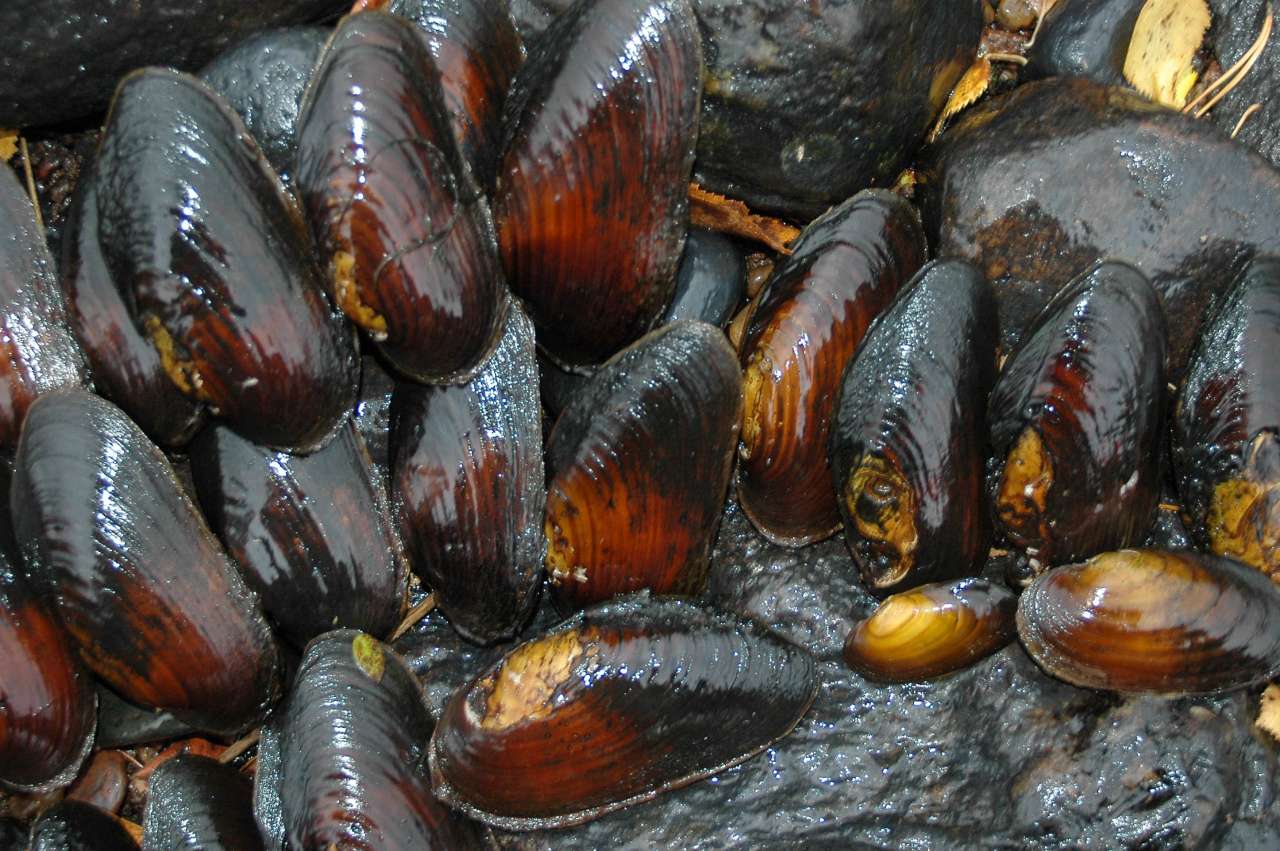River keystone species is dwindling

Photo: Paul Eric Aspholm.
The freshwater pearl mussel is a keystone species that benefits water quality and growing conditions for salmon and trout. However, like many other freshwater organisms, freshwater pearl mussels are disappearing from European rivers.
The main reason for this is human activity: Land degradation in and around rivers as well as overfishing.
The freshwater pearl mussel is a rare and endangered species throughout Europe. It is similar in appearance to the blue mussel, and can produce pearls, but this happens infrequently and the pearls are not particularly valuable.
For us, the freshwater pearl mussel’s greatest value is its role in water filtration. Each mussel filters around 50 liters of water per day, which improves the quality of the river water. Improved water quality increases the chances of survival for the eggs and fry of salmon and trout.
Increasing urbanisation and industrialisation—with the development and degradation of rivers and streams—are the primary reasons for the decline of the freshwater pearl mussel. Intensive salmon fishing has also had a negative impact on the situation, as salmon and trout serve as hosts for freshwater pearl mussel larvae.
New research shows that climate change has also contributed to the dwindling freshwater pearl mussel population. The freshwater pearl mussel is a cold-water species and thus thrives in a cold environment. An increase in water temperature creates more difficult growing conditions for the mussel.
NIBIO has collaborated with a group of European freshwater pearl mussel researchers to study how the endangered invertebrate and its hosts, salmon and trout, are affected by rising temperatures.
We collected 3,279 freshwater pearl mussel shells from museum collections and rivers across Europe, from the periods 1840–1940 and 1984–2013. The freshwater pearl mussel’s shell is affected by temperature, and the results showed that the shape of the shells followed changes in the summer temperature, all the way back to the early 1800s. In combination with climate models for the period 2061–2080, this indicates that the freshwater pearl mussel may disappear completely from lowland areas in southern and central Europe.
Contacts

Contacts

Publications
Authors
Ivan N. Bolotov Alexander A. Makhrov Mikhail Yu. Gofarov Olga V. Aksenova Paul Eric Aspholm Yulia V. Bespalaya Mikhail B. Kabakov Yulia S. Kolosova Alexander V. Kondakov Thomas Ofenböck Andrew N. Ostrovsky Igor Yu. Popov Ted von Proschwitz Mudite Rudzite Maris Rudzitis Svetlana E. Sokolova Ilmari Valovirta Ilya V. Vikhrev Maxim V. Vinarski Alexey A. ZotinAbstract
The effects of climate change on oligotrophic rivers and their communities are almost unknown, albeit these ecosystems are the primary habitat of the critically endangered freshwater pearl mussel and its host fishes, salmonids. The distribution and abundance of pearl mussels have drastically decreased throughout Europe over the last century, particularly within the southern part of the range, but causes of this wide-scale extinction process are unclear. Here we estimate the effects of climate change on pearl mussels based on historical and recent samples from 50 rivers and 6 countries across Europe. We found that the shell convexity may be considered an indicator of the thermal effects on pearl mussel populations under warming climate because it reflects shifts in summer temperatures and is significantly different in viable and declining populations. Spatial and temporal modeling of the relationship between shell convexity and population status show that global climate change could have accelerated the population decline of pearl mussels over the last 100 years through rapidly decreasing suitable distribution areas. Simulation predicts future warming-induced range reduction, particularly in southern regions. These results highlight the importance of large-scale studies of keystone species, which can underscore the hidden effects of climate warming on freshwater ecosystems.
